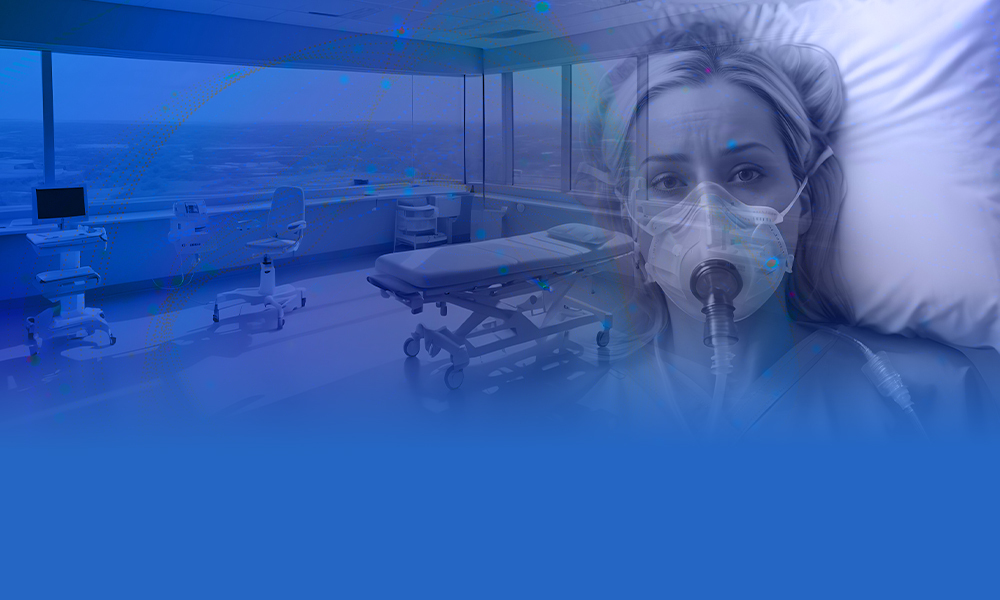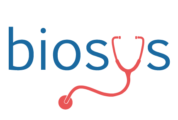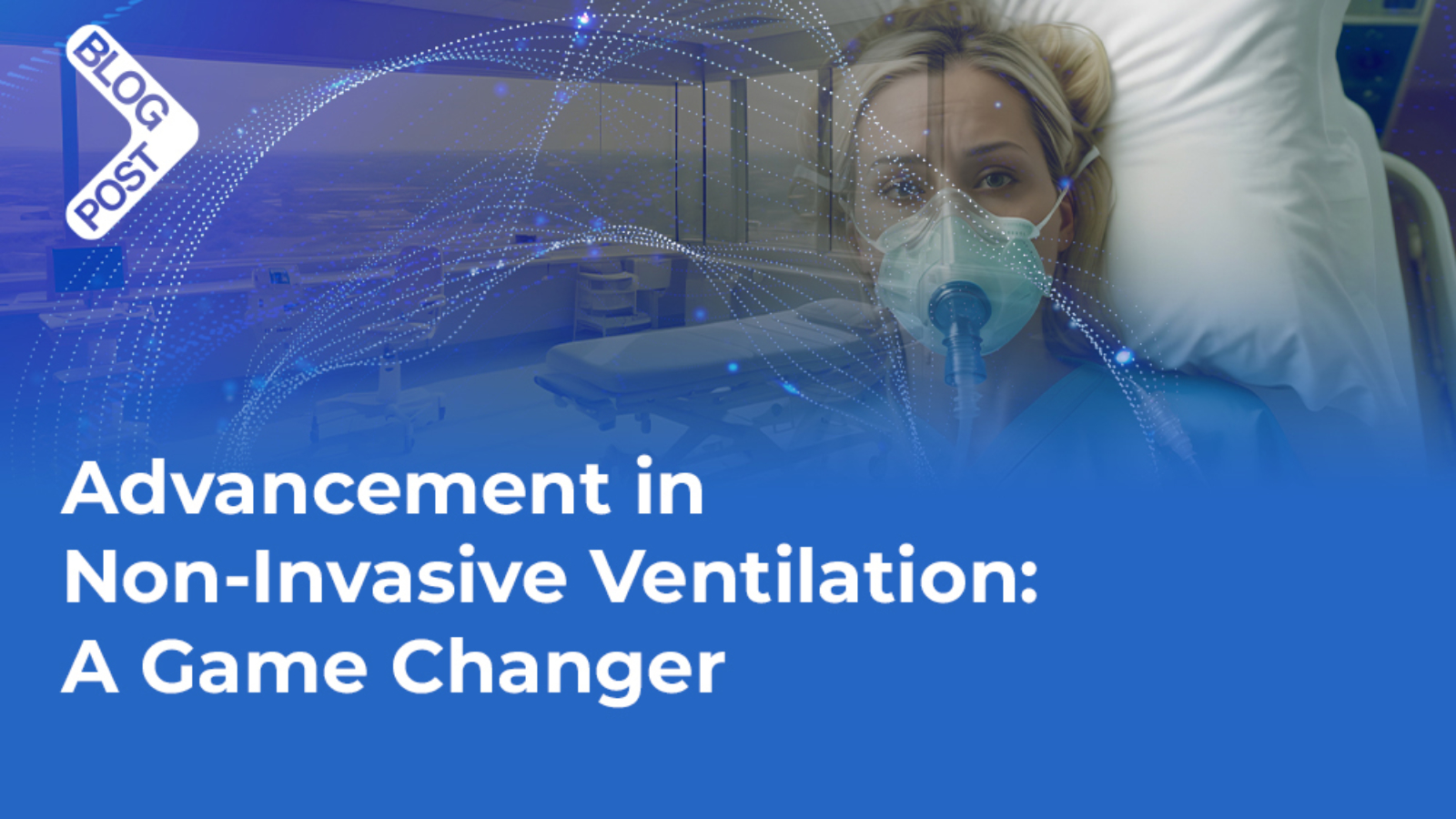Dated to the 1940s, Non-invasive Ventilation has been undergoing a series of changes with various modifications in designs and techniques. This improvement in ventilator modes has exceeded imaginations and has brought a lot of technical healthcare solutions to diverse medical problems.
Evolution of Non-Invasive Ventilation Technology
NIV as a mode of ventilation has a great impact in the intensive care unit, as it provides a life-changing option that produces more positive outcomes. In addition, its impact on humanity is much more than an invention but one with immeasurable support and medical advancement that comes with a decrease in problems associated with intubation.
This article shall discuss some of the clinical importance of non-invasive ventilation in comparison with the invasive method, its impact on patient outcomes, its various technical and clinical benefits, alongside some of the future trends NIV possesses.

What’s Non-Invasive Ventilation?
One of the special modes of ventilation that does not require the use of a penetrating apparatus (endotracheal intubation) to aid respiration is known as Non-invasive ventilation (NIV). This is a unique method that is often employed to reduce complications associated with invasive ventilation eg. acute respiratory failure, airway disorder, etc. It is a technique with various forms of suitable designs and modifications that help in maintaining chronic respiratory conditions.
What Are The Clinical Benefits And Patient Outcomes of Positive Pressure Ventilation (NIV)?
Assisted ventilation in humans comes in various ways, one of which is the process of using positive pressure to aerate the lungs. This mode of ventilation is often called Positive pressure ventilation. In most cases, this method is always utilized in a non-invasive ventilation system with diverse advantages and benefits compared to others.

Medical Benefits and Technological Advancement of Non-invasive Ventilation
- Special Treatment Provision: Non-invasive ventilation in the healthcare system serves as a special equipment that is used for the treatment of diverse chronic and mild conditions. Oftentimes, this positive pressure ventilation device in the BiPAP method serves as a standard unique treatment method recommended for some specific respiratory failure and occasional health safety (OHS) e.g. AHRF, pneumonia, etc.
- Used for Obstructive sleep apnea: Due to NIVs’ evolving features (i.e. a developed user interface), it is often utilized in many chronic and acute respiratory cases such as the treatment of obstructive sleeping apnea (OSA). This evolution has produced facial and nasal means of breathing pressure (CPAP) aimed at treating sleep-related respiratory disorders.
- Chronic Respiratory Management: Currently, NIV is a ventilator mode used as a proven treatment for patients with COPD problems and related chronic respiratory problems like neuromuscular abnormalities.

Technological Advancement of NIV Ventilator Mode
- Advanced Human Interface: More effective mask designs that have stronger sealing qualities, and air-leakage reduction which improve patient comfort are some NIV distinct attributes. These features mostly allow usage by a wide range of patient demography (young babies, adults, pregnant women, etc.)
- Automated Monitoring System: With the help of a modern detector and monitoring system, it ensures an accurate pressure setting. This integrated detector also supplies real-time data collections that assist medical professionals to track patients’ progress and modify treatment plans.
- Telehealth Implementation: Some technical advancements in NIV ventilator mode such as telehealth integration have been an advantage for most healthcare providers to monitor their patient health status remotely.
Non-Invasive Ventilation Patient’s Outcome
The impact of non-invasive ventilation on life has gained remarkable attention and patients with a range of breathing complications have been greatly helped and their health alongside their quality of life have improved. Below are some patient outcomes of non-invasive ventilation:
- Enhanced Respirational Ability: Oftentimes, patients with respiratory complications after being placed on NIV positive pressure ventilation, usually have an improved ability to respire. Appropriate amounts of oxygen have been obtained and various breathing complications are lessened.
- Reduction in Death Rate: According to studies, the impact of these modes of ventilation on life has caused a considerable reduction in mortality rate. Most cases like COPD can be managed leading to auspicious survival results: an effect orchestrated by non-invasive ventilation initiation.
- Decreased Rates of Intubation: The use of positive pressure ventilation can help avoid or reduce the requirement for invasive ventilation mechanisms. Patients who avoid intubation face fewer of the risks that come with invasive procedures.
- Improved Comfort and Adherence of Patients: Non-invasive ventilation (NIV) offers a higher degree of patient comfort. It Improves patient compliance with recommended therapies and serves as a direct result of increased comfort, which guarantees long-term therapy advantages.
Clinical Advantages of NIV over Invasive Ventilation
Clinically and technically, Non-invasive ventilation has an edge over invasive ventilation. It possesses a lot of features that are of great remark. The advantages of non-invasive ventilation are beyond measures in the medical application and we have some as follows:
- Reduce cost: When considering extended hospital stays and the requirement for critical care services, NIV is frequently linked to decreased healthcare expenditures compared to invasive ventilation.
- Decreased Infection Risk: By doing away with intrusive procedures like intubation, Non-invasive ventilation lowers the risk of pneumonia and other ventilator-associated illnesses.
- Reduction in Barotrauma Risk: The risk of barotrauma, in which high pressure damages the lungs, exists with invasive respiration. However, diminished pressure settings in NIV lessen this danger and diminish the possibility of lung damage brought on by the ventilator.
- Promotes Oral Health and Communication: Compared to patients with endotracheal tubes, patients under NIV have greater ease of communication, eating, and oral hygiene, which improves patient wellness and overall quality of life.
- Use at home is possible: You can use the NIV mode of ventilation with no need for airway skills. Its usage requires less medical prowess compared to invasive ventilation.
Future Trends in Non-Invasive Respiratory Support
In the medical field, there are a series of expected developments in technological modifications of clinical equipment. One of these devices that has been a major concern is the non-invasive ventilator (NIV). This appliance has been an incredible device linked with improving patient outcomes with its possible future trends. These future trends are said to optimize ventilation settings and improve personalized healthcare, with the integration of exceptional features such as:
- Algorithm and Artificial Intelligence
- Portable Design
- Wearable device format
- Improved Telehealth System
- Biocompatible
- Enhanced User interface etc.
References
- https://pubmed.ncbi.nlm.nih.gov/19111105/
- https://rc.rcjournal.com/content/64/6/712
- https://breathe.ersjournals.com/content/9/5/338
- https://www.physio-pedia.com/Non_Invasive_Ventilation
- https://onlinelibrary.wiley.com/doi/full/10.1111/resp.13497
- https://www.ncbi.nlm.nih.gov/books/NBK578188/
- https://bmcpulmmed.biomedcentral.com/articles/10.1186/s12890-016-0289-y
- https://breathe.ersjournals.com/content/13/2/84


Add a Comment